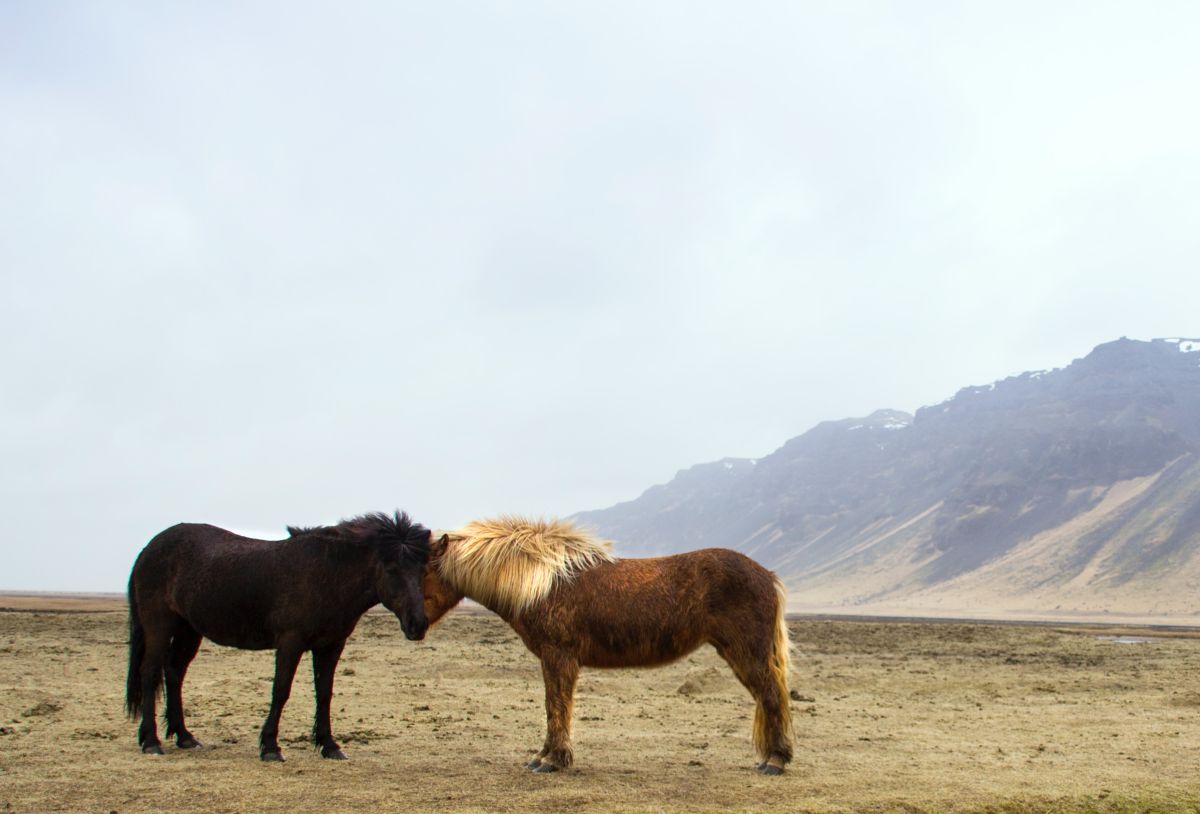Biting is often seen as a sign of aggression between horses, but it can also be a form of play. Understanding why do horses bite each other requires piecing together their complex behavior like a jigsaw puzzle.
From dominance and communication to the impact of the environment, this article will explore the many facets of why horses bite each other. With insights from real-life scenarios, it will delve into the nuances of equine behavior to uncover the truth behind horse biting.
Key Takeaways
- Horses bite each other due to dominance and competition for resources.
- Biting can be playful or aggressive, and it is crucial to recognize the difference.
- Understanding horse communication and body language is vital in identifying potential problems and ensuring safety.
- Environmental factors, such as low social interaction or crowded herds, can contribute to horse biting behavior.
Understanding Equine Behavior
Equine behavior is critical when attempting to understand why horses bite each other. Horses are herd animals and have a very complex social structure and herd dynamics. This includes body language, vocalization, and posturing between individuals in the herd.
Feed aggression is also common, particularly in herds with limited resources and in times of stress. Understanding the herd’s social structure and dynamics can help to identify potential root causes of biting behavior in horses.
Also, stress levels can affect when and why horses bite each other. A horse may resort to biting or kicking as a defense if it feels particularly stressed or scared.
The Role of Dominance in Horse Interactions
Dominance is a driving factor in the interactions between equines and can influence the behavior of horses. Herd dynamics, stallion rivalry, social hierarchy, food aggression, and mare protection are all examples of dominance-based behaviors.
In a herd setting, horses will establish a social hierarchy, with the most dominant horse at the top. This horse will first have the right to access food and resources and often display aggressive behavior to maintain its position in the herd.
Stallion rivalry is often seen in herds, as stallions compete for dominance and access to mares.
Mare protection is also driven by dominance, as a stallion will protect his mares to ensure that he has access to them and that his offspring are successful.
Food aggression is often seen in horses as they compete for resources. This behavior is also a result of dominance, as horses will fight for access to food.
Overall, dominance is an important factor in the interactions between horses. It influences the behavior of horses and drives the herd dynamics in a stable setting.
Understanding the role of dominance in horse interactions can help ensure that horses are kept in a safe and healthy environment.
Biting: A Form of Horse Play or Aggression
Horseplay involving biting can sometimes be mistaken for aggressive behavior. However, it is crucial to understand the difference between playful biting, typically part of bonding rituals, and aggressive biting, which can be due to environmental stressors or herd dynamics.
Playful biting is usually seen as a form of communication between horses and can be identified by the body language of both horses involved. The horse initiating the biting usually has its ears up and mouth open, while the horse receiving the bite will be relaxed and may even move away to avoid the bite.
On the other hand, aggressive biting is typically accompanied by a pinned-back ear, a tense body, and an open mouth. It is essential to recognize the difference between these two behaviors, as the consequences can also be very different.
Understanding the role of biting in horseplay and herd dynamics can help owners take steps to ensure a safe and healthy environment for their horses.
Insights Into Horse Communication
Horses communicate in a variety of ways, from vocalizations to body language, allowing them to form strong bonds and establish nuanced hierarchies.
As herd animals, horses are naturally prone to displaying behaviors that reinforce social dynamics, such as food competition and stress management.
Body language is critical in establishing a horse’s place within the herd and can involve anything from a slight head gesture to a full-on bite. In most cases, this is a form of play or a means of establishing dominance within the herd. However, a bite can be considered aggressive when used to injure another horse or with excessive force.
Understanding how horses communicate can help owners identify potential problems and take steps to ensure their horses stay safe and healthy.
The Impact of Environment on Horse Biting
The environment in which horses live can greatly affect the likelihood of horses engaging in biting behavior. Social anxiety, activity levels, herd dynamics, body language, and stress factors are all crucial components of the environment that can either encourage or discourage biting.
If horses are kept in a low social interaction or activity environment, they may become more prone to biting due to boredom. Similarly, if horses are in a herd that is too crowded or if there is high competition for resources, they may display more aggressive behavior toward each other.
Horses can also pick up on other horses’ body language and stress cues that can trigger biting. Therefore, providing a healthy and safe environment for horses, with ample resources and social contact, can help reduce the occurrence of biting.
How to Identify Harmful Horse Biting
Horse biting is a form of communication that can be beneficial or harmful, depending on the context. To identify if a horse’s biting is harmful, it is necessary to look at the herd’s hierarchical structure, the horses’ submissive behavior, and their body language and social cues.
In a healthy herd, the horses have a clear hierarchical structure, and the dominant horse will usually assert its position with subtle behavior like head tossing and rarely with biting. Submissive horses typically show signs of submission, like lowering their head or ears, and rarely bite.
If the horses are showing aggression through body language and social cues, such as snorting, staring, and tail swishing, then it is likely that the biting is a result of this and should be addressed.
Ways to Prevent Excessive Biting Among Horses
Proper management of the herd’s social structure is crucial to prevent excessive biting among horses. It is essential to understand the herd’s dynamics, social habits, and the body language of each horse. This knowledge will help the horse owner identify when a horse may feel stressed or threatened and, therefore may be more prone to biting.
Additionally, human influence can significantly affect the amount of biting within the herd. By providing enough space for the horses to graze and roam in a safe environment and avoiding overcrowding, the amount of stress in the herd can be kept to a minimum. As a result, the likelihood of biting can be significantly reduced.
Case Studies: Real-Life Instances of Horses Biting Each Other
Instances of horses biting one another can be seen in many case studies, providing insight into the causes and prevention of this behavior. One common factor in most case studies is the presence of play signals, herd dynamics, feeding habits, resource guarding, and stress levels.
For example, in a study conducted in 2017, researchers observed horses in a small herd exhibiting aggressive behaviors toward one another. The study concluded that the horses were biting each other due to stress levels and resource guarding, as the horses were competing for food and other resources.
Another study showed a similar situation, with the horses exhibiting aggressive behaviors due to the presence of play signals and herd dynamics. The study concluded that the horses were biting each other to show dominance and establish the herd hierarchy.
These case studies suggest that understanding the environmental factors and managing the behavior of horses can help to reduce instances of horse biting.
Frequently Asked Questions
How Can I Tell if My Horse Is Biting Out of Aggression or Play?
Horses biting each other is complex and can be attributed to various causes. To identify whether your horse is biting out of aggression or playful behavior, it is crucial to understand and observe its social hierarchy, herd dynamics, past trauma, and fear response.
Please pay attention to the horse’s body language and interaction with other horses or animals. When horses bite out of aggression, they may display tense body language, while they may look relaxed when playing.
Additionally, horses that have experienced past trauma may bite out of fear. By understanding the social hierarchy, herd dynamics, past trauma, and anxiety response, you can better understand the cause of your horse’s biting behavior.
What Are the Long-Term Effects of Horse Biting?
When horses bite each other, the long-term effects can range from minor to severe. Issues with social dynamics, herd hierarchy, and behavioral modification can arise.
Bite inhibition is also affected, where horses may become more aggressive or desensitized to biting. Stress management can also suffer from this behavior, as horses may become more anxious or stressed around other horses.
In some cases, horses may become more prone to injuring other horses or humans. Identifying and addressing the underlying cause is vital to prevent further issues.
How Do Horses Communicate With Each Other?
Horses are social animals that communicate with each other through various social behaviors, herd dynamics, dominance signals, and body language. A horse’s ability to understand and share information with other horses is essential for survival in the wild and domesticated settings.
To understand how horses communicate, it is crucial to understand herd dynamics and how horses use dominance signals to establish the hierarchy. Horses also use body language to express their emotions and to communicate with one another. Stress management is also a key factor in understanding how horses communicate, as it can influence a horse’s behavior and interpretation of social cues.
All of these elements are important to consider when looking at how horses communicate with each other.
Conclusion
Horse behavior can be complex and challenging to interpret. Biting can be a sign of aggression, dominance, or playful behavior. The environment and communication between horses can all influence this behavior.
Identifying and preventing harmful biting is crucial, as it can harm the relationship between horses. Understanding equine behavior is like solving a puzzle; each piece is unique and requires careful examination.

